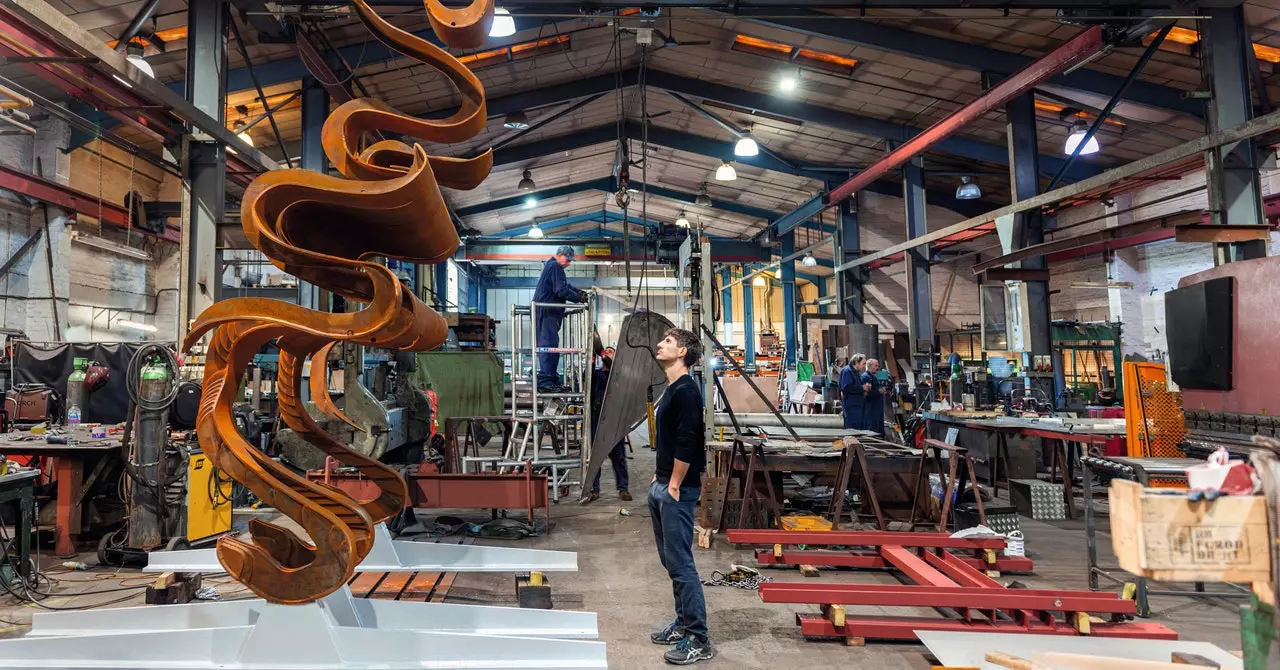Nick Hornby, a prominent artist based in London, has made a significant impact on the art world through his innovative use of technology and concept. With three permanent sculptures scattered across the city, Hornby challenges traditional notions of art and authorship. This article examines Hornby’s artistic approach, highlighting his mastery of blending digital processes with mechanical fabrications and his ability to capture the imagination of both art enthusiasts and the general public.
Hornby’s sculptures, scattered around London, offer a unique experience depending on the viewer’s vantage point. In St. James, his equestrian sculpture modeled after Richard I undergoes a mesmerizing transformation, appearing as an amorphous squiggle when viewed from different angles. Similarly, his take on Caspar David Friedrich’s Wanderer in Kensington turns abstract, challenging the viewer’s perception of the original artwork. Notably, Hornby’s sculpture of Nefertiti also serves as the Albert Memorial. These sculptures provoke thought about power dynamics and the role of monuments in society, showcasing the artist’s knack for combining craftsmanship and conceptual ideas.
Innovation through Digital Processes
Hornby’s work embodies a seamless relationship between concept, digital processes, and mechanical fabrications. From his studio in Northwest London, he explains how his sculptures evolve from digital models scripted in Python. These models are then translated into individual components that are laser-cut from metal and assembled by fabricators. The equestrian sculpture, for instance, comprised 165 pieces expertly manipulated into a six-and-a-half ton object. Hornby remarks, “It was a lovely, seamless relationship between concept, digital processes, and mechanical fabrications. But when people look at it, they don’t see that at all.”
Democratizing Artistic Expression
One remarkable aspect of Hornby’s work is his ambition to capture the imagination of a broad audience, extending beyond the art world. By manipulating familiar tropes, such as the man on horseback, he elicits reactions and challenges viewers to reconsider their preconceived notions. Hornby aims to address complicated ideas in plain English, making his work accessible to anyone. Whether it’s the art history enthusiasts recognizing the references or the general public intrigued by the modifications, Hornby’s sculptures spark curiosity and conversation.
Hornby’s journey towards merging traditional art techniques with modern technology began during his time at the Slade School of Fine Art. Embracing the possibilities offered by the new digital landscape, he dabbled in video production and joined the artist-hacker collective Radical Software/Critical Artware during a semester at the Art Institute of Chicago. Additionally, Hornby explored the potential of MAX MSP, an object-oriented programming language employed by Radiohead. These experiences paved the way for his pursuit of a master’s degree, ultimately shaping his artistic career.
Embracing Substance over Process
Hornby’s artistic transformation reached its pinnacle when he decided to eliminate any form of human subjectivity from his work. Frustrated by the question of “how did you do it?” and longing for a deeper exploration of meaning, he meticulously obscured wires and screens, erasing rough edges with laser precision. By removing the focus from the technical processes, Hornby invites viewers to engage with the substance of his work, encouraging contemplation and critical thinking.
Nick Hornby’s innovative approach to art has solidified his place as a captivating contemporary artist. Through his fusion of digital processes and mechanical fabrications, he creates thought-provoking sculptures that challenge traditional concepts. By democratizing art and capturing the imagination of a diverse audience, Hornby continues to push boundaries and redefine the relationship between technology and artistic expression. As his career progresses, it will be fascinating to see how he continues to reshape the art landscape with his unique blend of concept and technical wizardry.


Leave a Reply